Review | Tiny Metal
When I was offered Tiny Metal to review, I only knew two things about it: first, it was turn-based strategy and second, there had been comparisons to Advance Wars (which I knew I had played at some point, back in the 1920s). Either of these features alone would have made me jump on this project. Needless to say, since it contains both, I was both ready and eager.
While there are skirmish maps available from the beginning, I would advise going through the campaign in order to learn how to play. Alongside teaching you all the lore and the main story, Tiny Metal is also slowly instructing you about how to play. Each new level generally brings a new type of equipment into the fold.
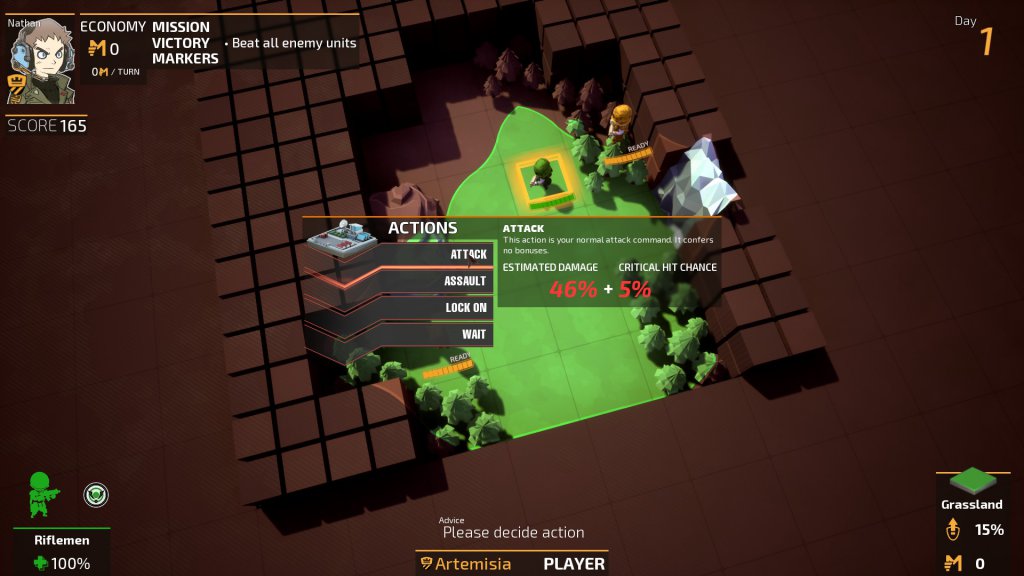
Like any good tactical game, before even looking at the units, you need to familiarize yourself with the terrain. Roads are all I have found to provide no bonuses whatsoever. Even the grass gives you a 15% defensive bonus. Forests are better at 35%, while hills then ramp up to 50% (mountains are impassable, except for air units that have the ability to fly over them). A little surprisingly though, buildings don’t offer quite as much protection. Factories give a 20% defensive bonus, while cities give 35% and headquarters give — correctly so in this balancing context — 50%. As with the rest of this review, I will not list every building (or unit, strategy, story point, etc.).
The units, although done in a comical style, are obviously the most important aspect of Tiny Metal. You start very slowly with only the ability to buy and use Riflemen (infantry). These are the most basic troops in the game, with the lowest production costs (100 M). They have a movement of five squares and a visual range of three. Most importantly though, you need them no matter how far into the campaign (or skirmishes) you go. They are, easily, the best at capturing facilities. (I will note now that all units level up, as well.)
Why capture facilities instead of simply outgunning and out-strategizing your enemies? Every building you capture adds to your income for the next turn. You acquire all your units with the money you obtain each round (yes, it does carry over if it is not all spent). Provided you have sufficient money and have captured at least one factory you can produce units at the beginning of each phase. They do not move the same round they are bought but are available from the start of the next turn — provided they survive until then, of course.
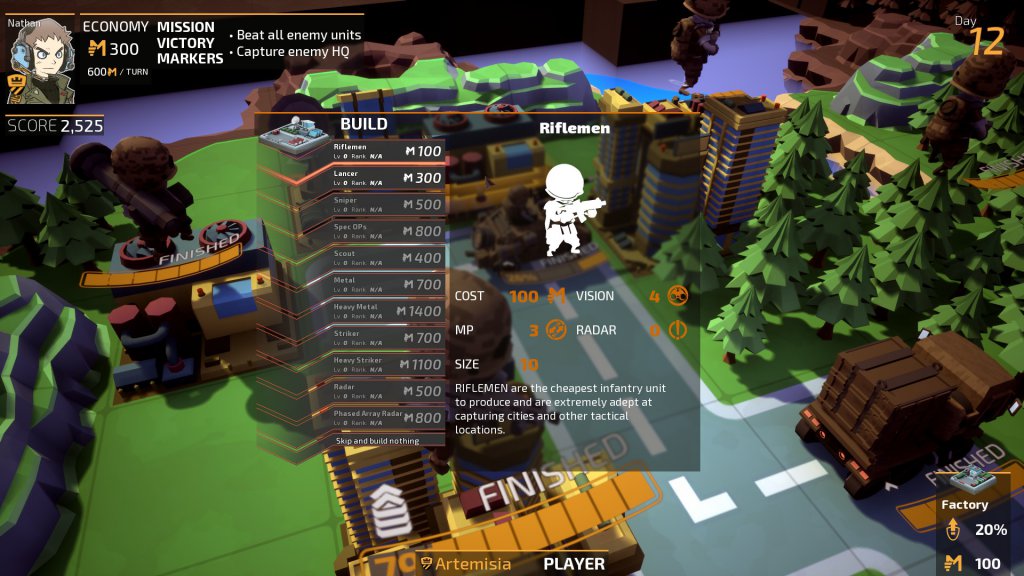
As you advance through each scenario within the campaign, you are slowly introduced to new units. Since armor appears rather quickly, you next get Lancers (anti-tank, bazooka/rocket-propelled-grenade-wielding guys). Because infantry have no effect on tanks, you need these troops to counter their armor. However, they are more expensive (300 M) and their main trade-off is that they are much slower at capturing facilities. This prevents you from loading up on an entire army of Lancers, although that is theoretically possible. Even though they have the same visual range as Riflemen, their movement is cut by one, down to three. I will say right here that even though the maps are relatively small in the beginning, even when they get larger, one square of movement can mean the difference between life and death for multiple units.
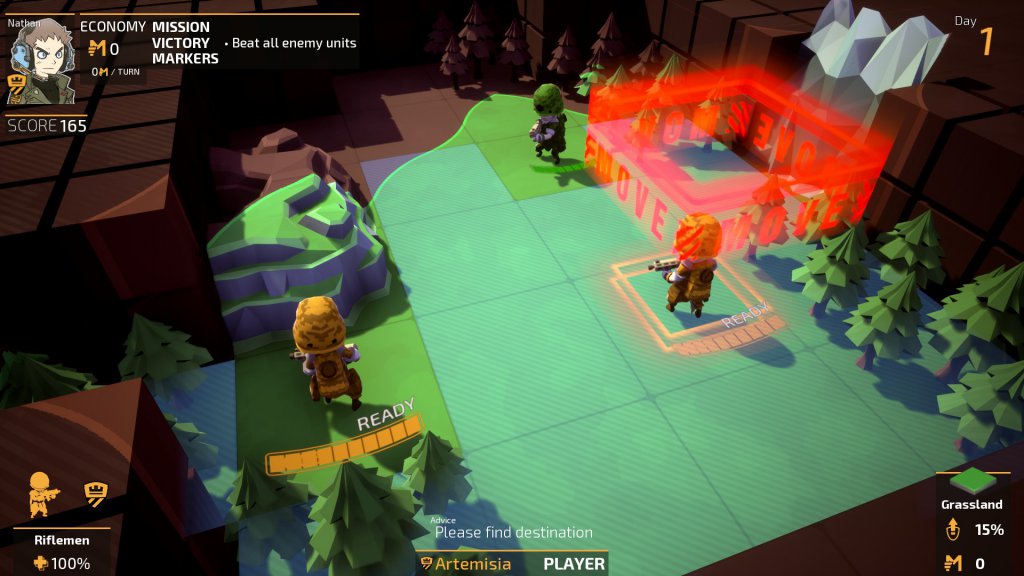
Lightly armored, anti-infantry Scouts (costing 400 M) and the much-tougher METALS (tanks, at 700 M each) round out the early-game units with which you can equip yourself. Balance is extremely important when choosing who to build next. Scouts move the furthest of the early units (five tiles) and have the best visual range (four tiles), but are highly vulnerable to METALS and Lancers. Another very important consideration is the fact that neither Scouts nor METALS can capture the all-important buildings.
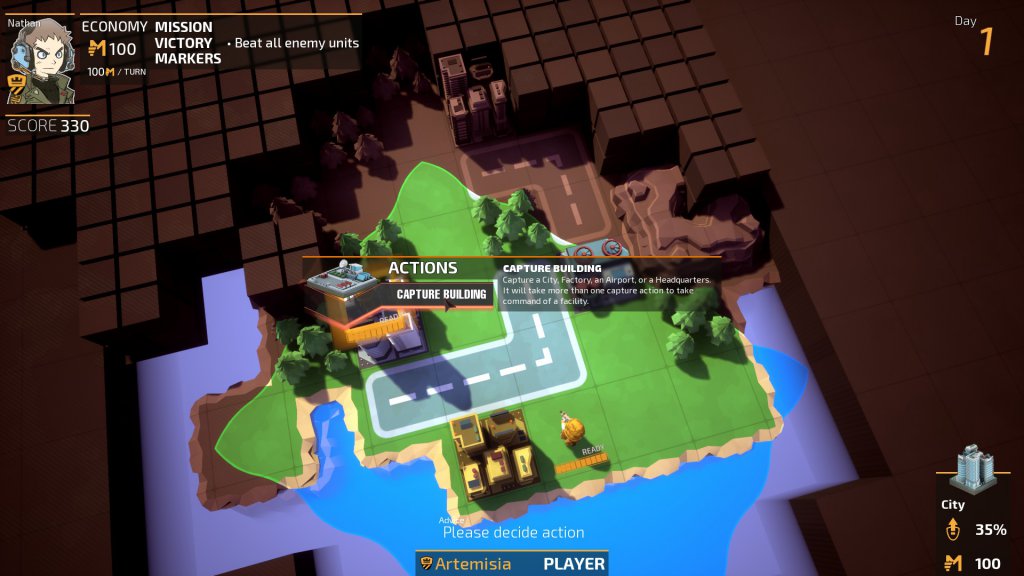
Another very good feature of Tiny Metal is that save-scumming is impossible. There is one save for the campaign, then one save only for the skirmish battles. If you feel like you are losing and/or not doing well, while you are still within a specific scenario, you do have the ability to go back and retry — from the start of that section. You just cannot have multiple saves on each map. Additionally, you can go back and retry any level you have completed.
If it is important to you, there is also a running score — the culmination of each step of the campaign. At the end of each scenario, you are given your score and are then placed into a category out of gold, silver or bronze — for that level. So, if you’re happy with the victory but not with the score, you can go back and retry. (Once I have completed the game, my goal is to go back through and get a gold rating through the entire campaign, on every level. This will be a lot easier said than done).
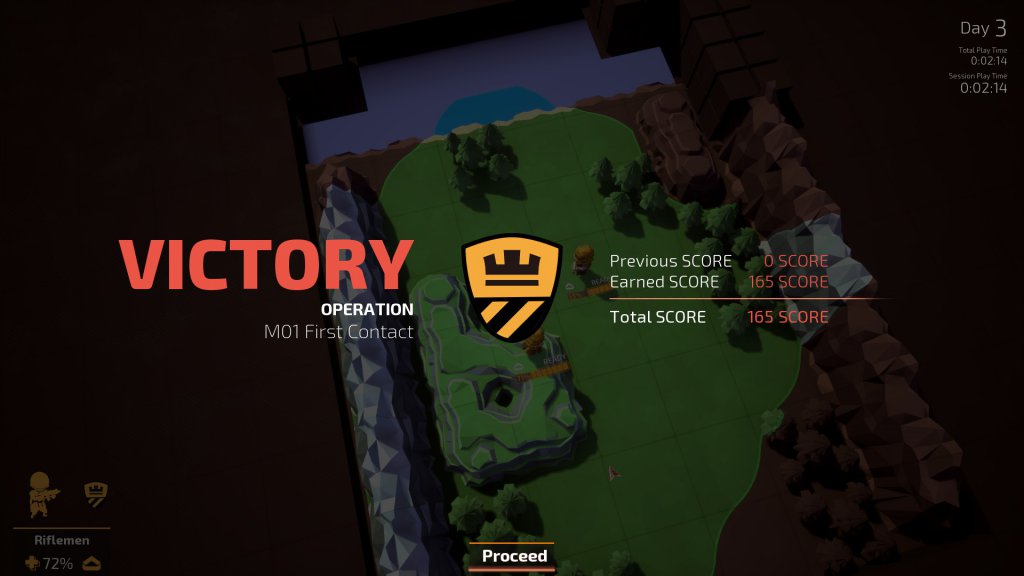
As you strategically fight your battles in Tiny Metal, units and terrain alone are not your only choices. Your troops can be repaired. While new units cost money, repair only costs time. The infantry-type troops are easy: you simply go to a conquered city and sit each turn until repaired fully, or to an acceptable level for you to put them back into the fray.
However, armored (and later air) units come with much harder decisions. Armored units repair at factories, air units at airbases. The quandary then becomes that if a unit is sitting on top of either a factory or an airbase to repair, you cannot use that facility to produce a new unit! Not only that but when a new unit is produced, it is at a raw or green level. So, do you produce a new unit with less experience or tie up a factory/airport for a certain amount of time while your veteran unit with four or five stripes heals itself?
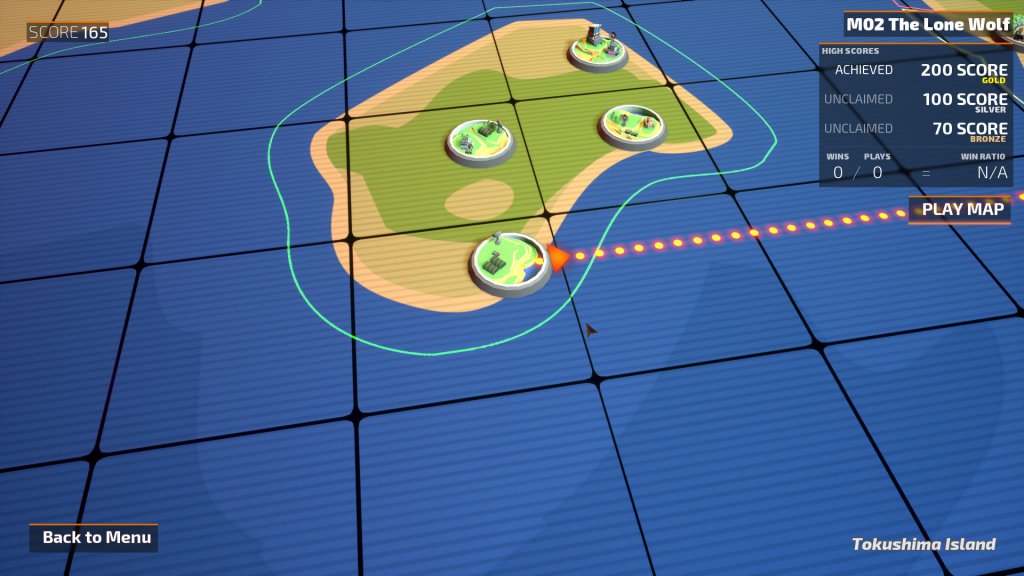
While the tactical and strategic aspects of Tiny Metal are genuinely fun, getting to them can regrettably be rather patience-testing. Before each new level, multiple screens tell you the story as well as sometimes introduce new unit types. ‘Numerous’ or ‘multiple’ are both quite the understatements. There are a lot of screens, man. There is a ton to read through. While there is a fast-forward button, it’s very possible that you might miss certain important information needed to go to the next step. (Between two levels, I counted the screens — and gave up at thirty. There were plenty more afterward, too).
Below each screen is also a ‘Next’ button. Unfortunately, it doesn’t quite work as intended. As the screen is being shown and the (English) words appear, the characters stand in the background giving the information in Japanese. No matter how quickly you read, though, you cannot simply hit Next to advance the dialogue. It doesn’t wait for you to hit the Next button, either, so if the doorbell rings, there’s no stopping the information. If you think it was important enough and you actually wanted to read it — you need to restart the level and sit through all of it again. Tiny Metal is not a game you’re going to jump right into, unless you don’t want any of the helpful tips about units, gameplay, etc.
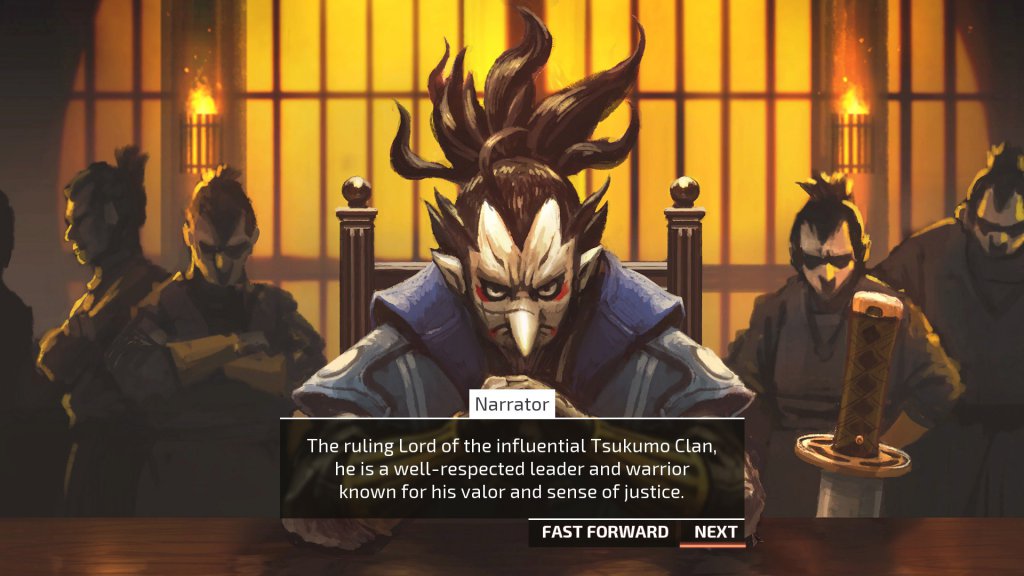
There are a few other, minor quality of life issues that could easily be altered to make this good game much better. A lot of the infantry units look very similar, as do the Scouts and METALS. More than once I moved a Sniper thinking it was a Rifleman; even more often I moved a Scout, thinking it was METAL — each time, I paid for those mistakes dearly. Finally, they should have put in more of the units’ dialogue options. They repeatedly say the same phrases over and over. If I never hear “Wham, bam, thank you ma’am” again in my life, I’ll be just fine with that.
The fog of war is great, as well as having a cool unveiling/fog-lifting animation, but I’m assuming as a design choice, you can only ever move one square into it. This works fine on smaller maps, but as they get larger, it can get a little annoying.
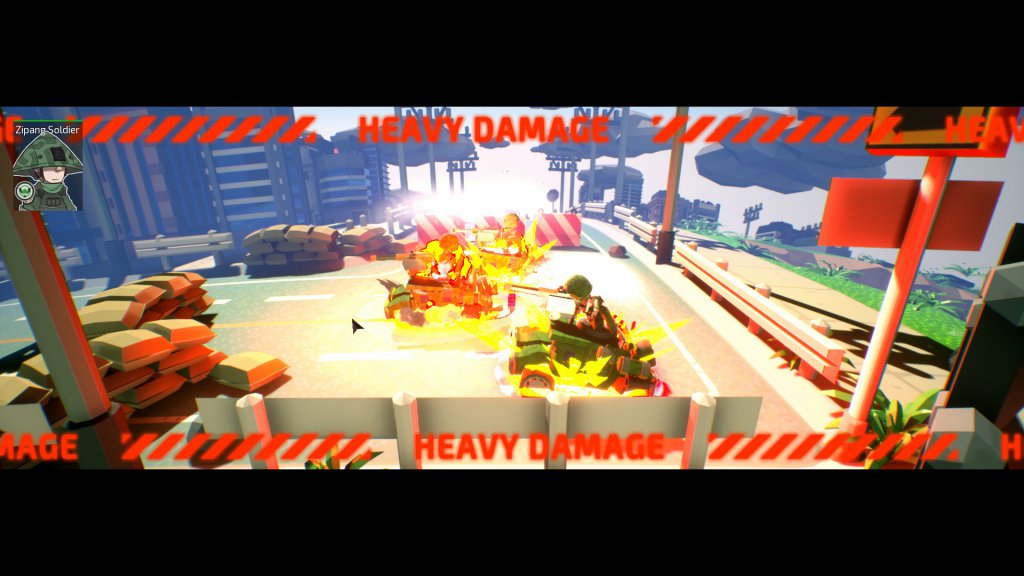
Those few niggles aside, I had a good time with Tiny Metal — when I was actually playing the game itself. The AI is pretty good and might actually be kind of tough for people not used to tactical warfare. You can make a mistake, or maybe two, but you will pay if you don’t keep your attention on your surroundings and on what the enemy is doing. There a lot more types of troops and buildings, all of which make you adjust how you approach each map. If you move too fast, you might miss something of importance. Too slow, and your score will suffer.
Right now, there are only two things left for me to do, campaign-wise. First is to finish it, as it seems to have a good length. Second, as I mentioned before: to go back through and see if I can rack up golds all the way. Finally, there are fifty-six skirmish maps! So far, I’ve only played three and had a blast playing them, as every unit is unlocked for those. Off to fight the evil Zipanese (those are the bad guys)…
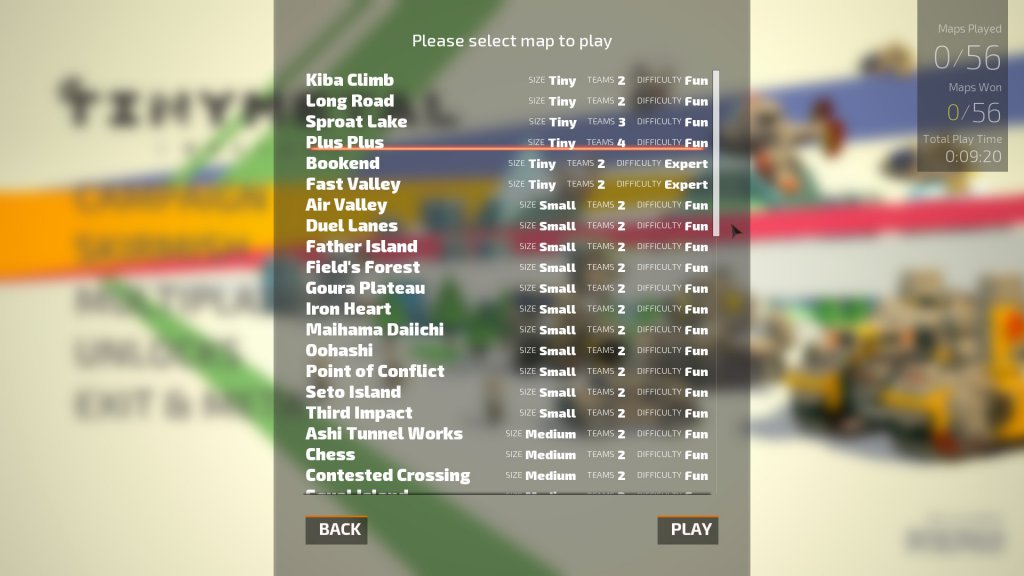
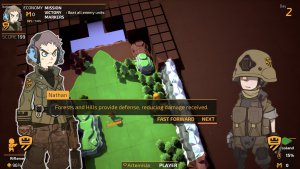
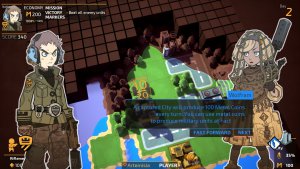
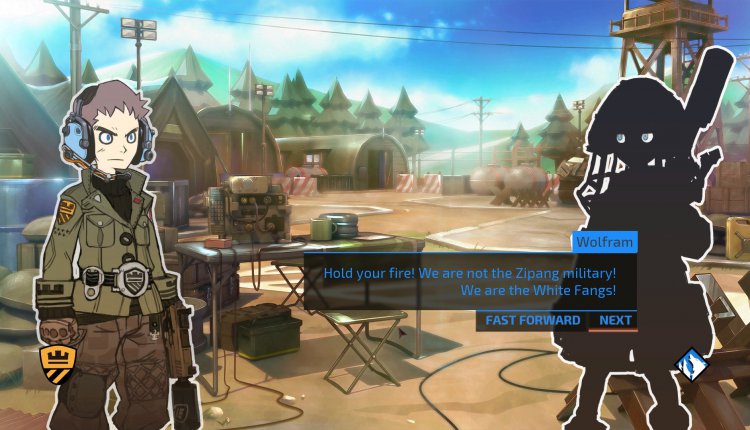
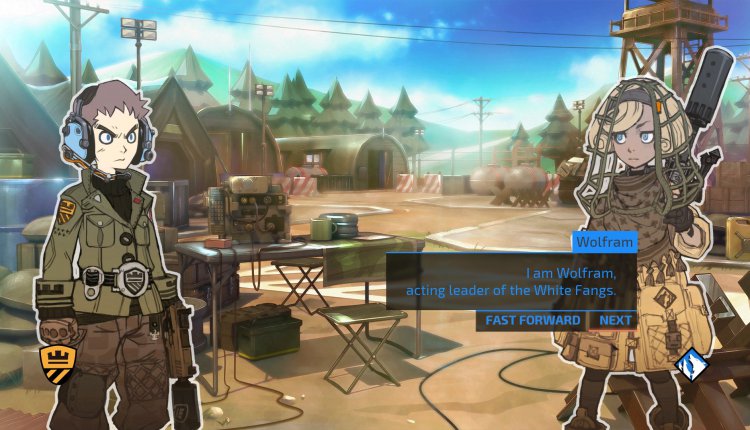
Comments are closed.